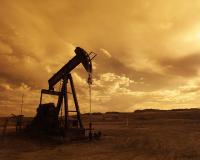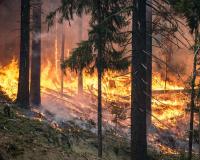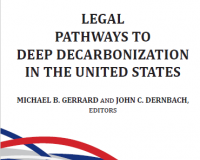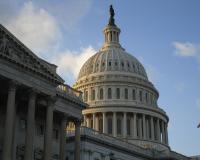
Vibrant Environment
Climate Change And Sustainability
All | Biodiversity | Climate Change and Sustainability | Environmental Justice | Governance and Rule of Law | Land Use and Natural Resources | Oceans and Coasts | Pollution Control

When’s the last time you found yourself idly shopping out of boredom or buying a shirt just because it was on sale? If it was in the last week, then you’re not alone. The average American shopper buys 60% more clothing today than they did just 15 years ago, but keeps it for only half as long. At the end of the year, this results in approximately 80 pounds of unwanted clothing per person!

With the help of the U.S. Congress, the U.S. Department of the Interior (DOI) has had a long and proud history of tackling pressing challenges through responsible and inclusive management of America’s public lands. One might expect it would continue that tradition as climate change has become a major challenge confronting the nation.

With climate change actively intensifying impacts from natural disasters, it is now more important than ever to design and implement community resilience plans and actions that will minimize damage when disasters occur. To prepare for an increasingly uncertain and fraught future, communities are identifying vulnerabilities, planning for forthcoming disasters, and taking action to become more resilient. But what exactly does resilience mean? What does it mean to be a resilient community? And, importantly, is there a concrete way to measure a community’s progress toward resilience as it is defined by the community so that its members can ensure they are taking appropriate steps to be better able to respond to a new normal?

Women have been leaders in every major movement, though their contributions all too often go unrecognized. The environmental movement is no exception. Women striving toward the betterment of this field have faced many challenges, but through skill and determination, they persevered. The environmental movement is over two centuries long with generations of women shaping policies and laws within the field. This blog features just a handful of the numerous women who paved the way for future environmentally conscious generations.

Many have argued that gender equality and women’s empowerment are essential to advancement in many areas of life, such as business, health, and education. This brief blog post posits that the field of sustainable development and environmental protection are no different. Gender equality and, more particularly, women’s empowerment, are critical to achieving sustainable development across the globe. It is not a one-size-fits-all proposition, and the gender differences and deeply rooted policies that perpetuate inequality differ from region to region.

The 2018 wildfire season in California has been the state’s deadliest on record, and the 10 most deadly fires in California’s history occurred in the last four years. In a deviation from historic records, documentation of these recent fires show that their occurrence has become nearly year-round rather than seasonal. These fires pose extreme threats to 25 million acres of California’s wildlands, as well as to the 11 million people who live within the threatened area. In addition to intensifying climate change, faulty equipment and electric transmission from utility companies have contributed to the increase in wildfires in these high-risk regions. However, taking full monetary responsibility for these fires can lead to near or certain bankruptcy for the utility companies.

Any self-respecting environmental lawyer knows, 2019 marks a major anniversary for environmental law: the Cuyahoga River fire of 1969. While we note the anniversary today, I doubt onlookers in Cleveland appreciated at the time that it would give rise to a five-decade era of environmental lawmaking.

In ways that did not exist even ten years ago, everyday people are acting as scientists: contributing their time and data to make notable discoveries, answer lingering questions, and develop awareness. Motivated by technology innovations, public concern, and limited institutional capacity, citizen science is gently reshaping the conventional systems that address human health and environmental protection.

“For everything there is a season,” says the old Pete Seeger song, quoting the much older still book of Ecclesiastes. It seems that we are currently in the season of walls. The physical manifestation of this particular period may be the issue of the wall on our southern border. But there are other walls, and some of them have law as their concrete or steel.

Climate policy has again risen to the top of the national agenda. Although the current Administration has taken actions such as withdrawing from the Paris Agreement or relaxing regulations on vehicle and power plant emissions, members of Congress are formulating progressive proposals to mitigate climate change, and states have taken ambitious steps to reduce carbon emissions. A carbon tax proposal has gained traction among conservative think-tanks and politicians, House Speaker Nancy Pelosi has formed a Select Committee on the Climate Crisis, and the Green New Deal has sparked a robust debate on pathways to a more sustainable future.